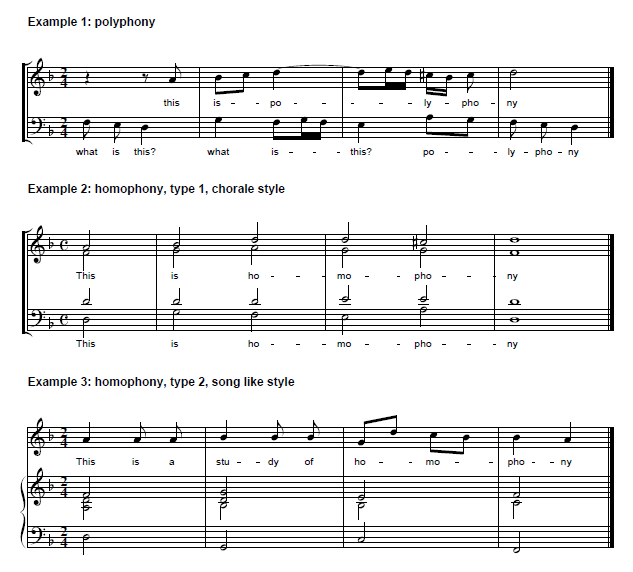Introduction
The terms polyphony and homophony refer to compositional techniques which differ in the relation between horizontal and vertical musical phenomena, i.e. between melody and harmony. With these terms, you can describe many, although not all musical forms in music history.
|
Polyphony
In a polyphonic style, the composer pays attention to the melodic value of each part (a 'horizontal' approach). The result is an interplay of several, more or less independent, at least two melodies simultaneously. Popular polyphonic genres are canon and fugue.
Polyphonic features are
- independent rhythmical organization
- melodic independence, e.g. by contrary motion and by imitation techniques
The effect is that in vocal polyphony text can not be understood very well. Study example 1.
|
|

|

